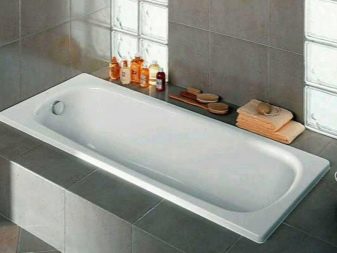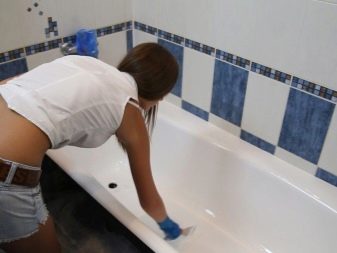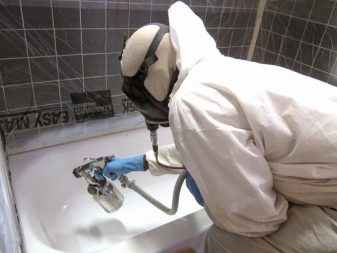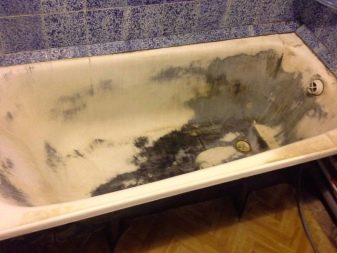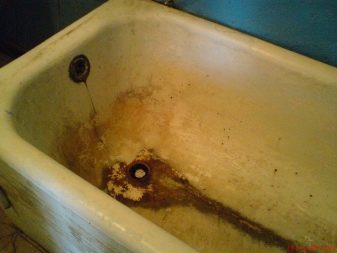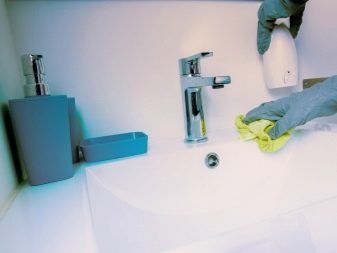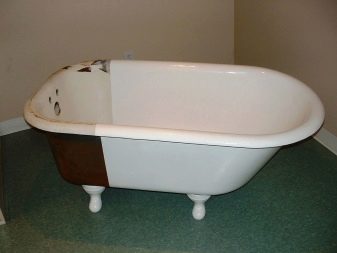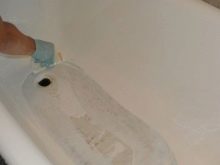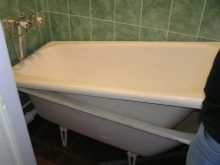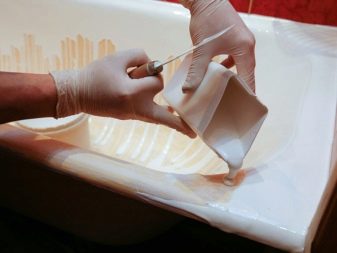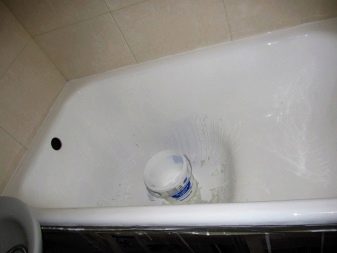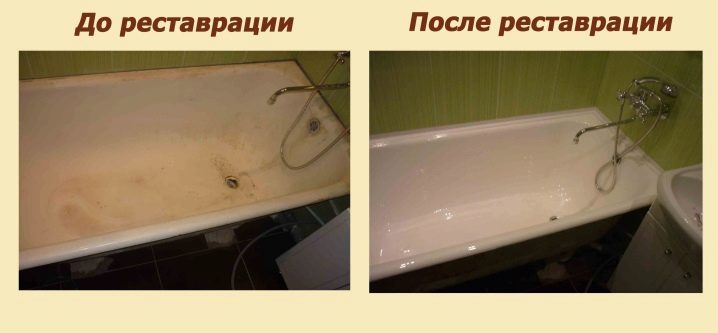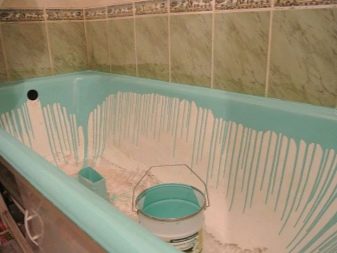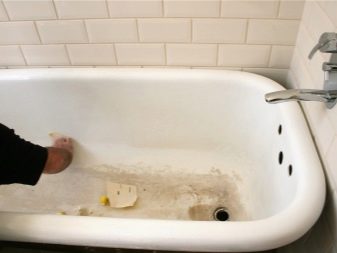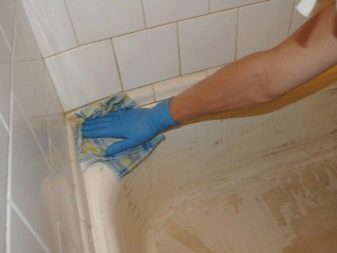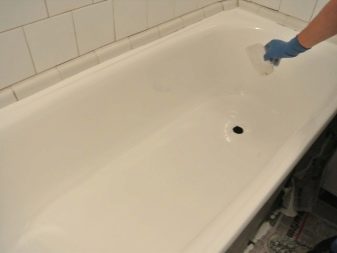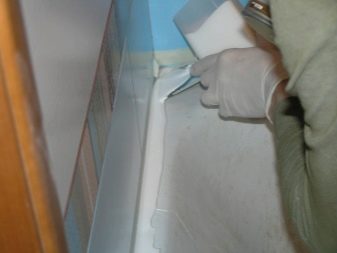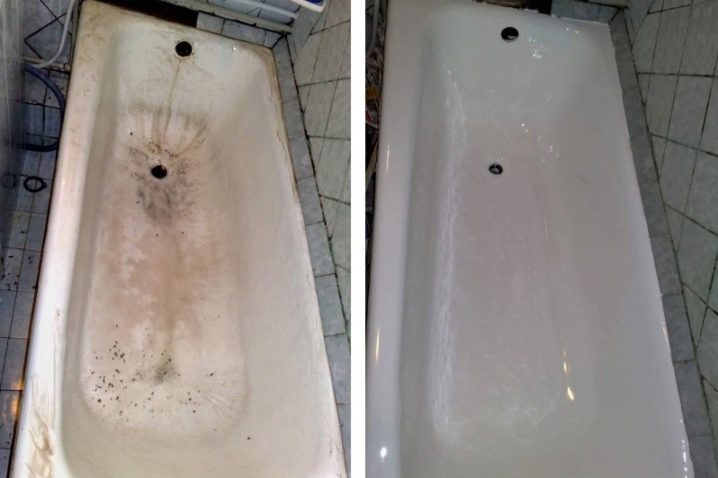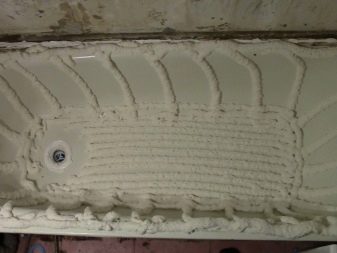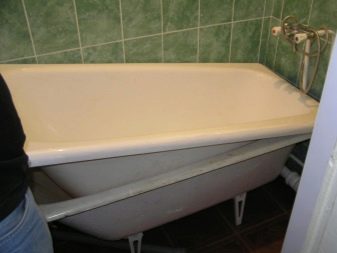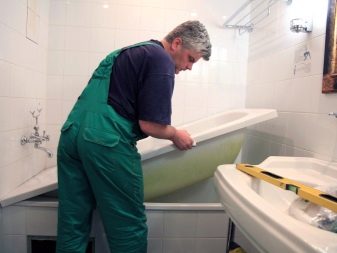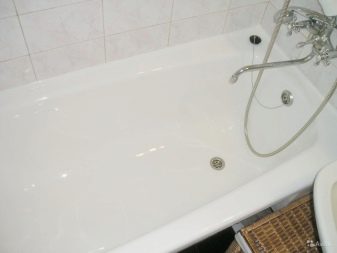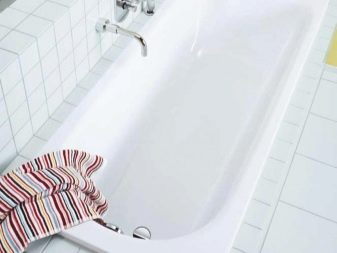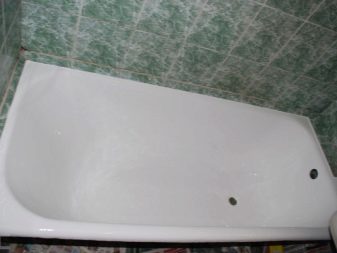Cast iron bath restoration: popular methods
Even very high-quality plumbing deteriorates over time. Enamel bath covers are damaged and covered with rusty stains, yellowness and cracks. Restoration of the cast-iron bath will allow the product to return its original appearance. Popular methods of its repair will be considered in more detail in this article.
Special features
Cast iron baths are very popular, which is due to the good quality of plumbing and low cost. However, special care is required for cast iron tanks, otherwise the enamel coating deteriorates and the product loses its original appearance.
The bath itself can last more than 50 years, which, unfortunately, cannot be said about enamel. Since the coating is constantly exposed to the negative effects of externalfactors, its layer becomes thinner over time. It is not always possible to replace the old cast-iron bath with a new one. Timely restoration will extend the life of the old plumbing and return the original appearance to the coating.
Repair of cast iron bath can be easily carried out independently, without resorting to the expensive services of craftsmen.
It is advisable to resort to the restoration of old plumbing in the following cases:
- Saving money on the purchase of new plumbing. It is not always possible to replace a damaged cast-iron bath with a new tank.
- Features of the bathroom and the form of plumbing. In certain cases, the dismantling of the bath can be complicated by the inability to remove the bowl from the room without damaging the decoration or the doorway. In addition, plumbing can have a non-standard shape or size, and it is extremely difficult to select a replacement with suitable parameters.
- Rented living space. It is not advisable to replace plumbing at their own expense in a rented apartment.
Causes of damage
Bath is the subject of plumbing, which is subject to intensive use.Over time, even the highest-quality enamel coating deteriorates from regular exposure to water, cleaning products and mechanical loads.
The most frequent injuries and the reasons for their formation include the following:
- Formation on the surface of yellow spots. This defect appears as a result of the negative impact of running water, which contains a large amount of iron. If you do not remove plaque in a timely manner, then rust will appear on the spot of yellow spots.
- Mechanical damage in the form of scratches and scuffs results from the use of abrasives and metal brushes for bathing.
- Impacts resulting from the fall of even small objects, can form cracks or provoke delamination of enamel.
- Cracks may appear on the enamel as a result of mechanical stress on the surface or temperature changes.
Preparatory work
Before proceeding with the restoration of the bath, the tank must be prepared for further work. Without preliminary preparation it will not be possible to carry out high-quality restoration of the coating.First of all, you need to carefully inspect the plumbing surface for rust. If the enamel is covered with corrosion, then it must be removed with a solution based on oxalic or acetic acid.
The mixture is applied to the damaged areas and left for 30 minutes, then rub off contamination with a damp sponge. If the acid did not help get rid of rust, then you will have to apply a mechanical method of cleaning.
After removing rusty deposits, the surface of the tank is sanded with emery paper or with a grinder. This removes the old enamel layer. In the presence of serious mechanical damage in the form of deep cracks or chips, it is necessary to seal the defects with a putty for motor vehicles.
The final stage of surface treatment is degreasing. Bathrooms can be washed inside the usual baking soda, after which the remnants of the substance must be thoroughly rinsed with hot water.
Proceed to the restoration of plumbing is possible only after its complete drying. Pre-remove the drain-overflow system and install a deep container under the drain hole.into which the surplus of used means for restoration will flow. Particles of dust and dirt from the surface of the bath are removed with a vacuum cleaner.
Ways: detailed description
Even an inexperienced master can restore a cast-iron bath at home with his own hands. It is only necessary to choose the most suitable method, be patient and follow all instructions.
There are three main ways to upgrade cast iron baths:
- enamelling;
- surface coating with liquid acrylic;
- installation of acrylic liner.
Enamel restoration
One of the most popular ways to restore the cast-iron bath coating is surface enameling. This method does not require large expenditures and is quite simple to use. Painting plumbing is carried out using quick-drying epoxy paint or more expensive mixtures.
The process of enamel recovery is as follows:
- Paint and varnish material is applied to the pre-prepared surface with a natural bristle paint brush.
- The coloring composition must be applied, starting from the sides of the bath, and move towards the deep part.The paint layer should be uniform and thin.
- If a layer of paintwork material is too thick on the bottom of the bath, the surplus must be carefully spread over the surface or removed.
- Epoxy paint is applied in at least three layers. The interval between application should be half an hour. It is recommended to apply the last layer with the help of an airbrush.
- After painting the tank, it is recommended to close the bathroom. The process of complete drying is at least five days. During the drying of the cast-iron bath is prohibited to use.
According to the reviews of masters, in order to restore the white enameled coating, it is better to use special coloring bath mixtures. Special formulations will provide a better result. Alternatively, you can use yacht paint, but the resulting coating will not be durable. The cast iron bath can also be restored with polyester. Polyester enamel has a large range of shades, which allows you to create coatings not only white.
The main advantage in applying the method of enameling the surface of the thicket is the minimum cost of repairs.In addition, this method of restoration is considered the simplest and does not require special skills.
However, enamel bath has its drawbacks:
- The paint is prone to the formation of yellow spots. After a while the surface will again need restoration.
- Most pigments for cast iron baths can last no more than 5 years.
- The prolonged drying of the enamel creates certain difficulties. Bath can not be used for almost a week.
- With the help of enamel it will not be possible to mask the irregularities on the surface of the bowl.
Liquid acrylic
Finishing the bathroom with a bulk glass is a more laborious process than enameling. Stakril is a modern material, which consists of two main components: acrylic and hardener. When the mixture is applied to the surface, a dense acrylic film is formed, the thickness of which can be from 0.4 to 0.8 centimeters.
Due to its good fluidity, liquid acrylic fits well on the cast iron surface in an even layer. The polymerization of the substance does not occur immediately, which allows, if necessary, to correct the defects obtained when applying glass.
Before starting repair work, the surface of the bath is cleaned and polished. On the site, which is located next to the tank, you need to lay a plastic wrap or thick cardboard to protect the surface from contamination. The section of the wall adjacent to the bathroom, pasted masking tape.
Wrap the crane with a dry cloth and fix a plastic bag or film over the fabric. This is necessary so that the water from the mixer does not accidentally fall on liquid acrylic during repair work. The drain is closed with a special stopper or disposable plastic cup.
Before treatment with liquid acrylic bath surface, it is necessary to prepare a working solution. The base and hardener are mixed in a convenient container. The resulting solution is thoroughly mixed for 10 minutes. The mixture must be poured into a convenient container. The solution is poured on the area that is outside the tank next to the wall. Gradually, the sides of the bath are poured with a solution, moving around the perimeter.
Liquid acrylic will flow into the bowl and evenly distributed over the entire surface.If some areas are left unpainted, they are applied to the mixture with a plastic spatula. Movement with a spatula should be smooth from the bottom to the top.
After the distribution of liquid acrylic, you must open the drain. Excess solution should be drained into a prepared container. Full drying of the treated tank will occur at the expiration of the day. It is recommended to use the bath as prescribed no earlier than in two days.
The advantages of using this method include the following:
- quick drying of the surface;
- using a liquid acrylic forms a fairly durable coating;
- the coating is not subject to the formation of yellow spots;
- the service life of the acrylic layer can reach 10 years;
- the coating of liquid acrylic is practically not slippery.
The disadvantages of this method include the high cost of the materials used and the complexity of the repair work. Without certain skills, it will be difficult to create a high-quality coating.
Using liner
Renovating a cast iron bath with an acrylic liner is quite simple. Removing the old layer of enamel before the restoration in this case is not required.Typically, this method is used when the tank is severely damaged. The essence of this method lies in the fact that a special acrylic liner in the form of a bowl is installed in the bathroom, which follows the shape of the tank.
The most difficult thing to use this method is to make accurate measurements of the bath and the holes for drainage and overflow. It is not always possible to find an acrylic insert of suitable shapes and sizes. However, many companies make bowls of any parameters for cast-iron baths to order. A quality acrylic liner must be at least 0.6 centimeters thick.
Before fixing the acrylic insert in the presence of serious defects on the surface of the tank, the damaged areas must be puttied. Additionally, it is necessary to remove the overflow system and the mixer. Also, the sides of the bathroom are removed and a part of the tile is cut, which is located on the wall next to the tank.
The finished liner is installed in the tank, with a pencil mark the places for the drain slot. Acrylic bowl removed from the bath and make holes for draining. The liner must be re-placed in the tank.With all the holes and no errors, you can proceed to fixing the bowl.
The area around the drain is treated with a special sealing compound., and an adhesive mixture is applied to the surface of the liner. The bowl is placed in the bath. The joints of the tank and the acrylic insert must be sealed with a sealant, after which the bowl is filled with water. After a day, the water can be drained and begin to use the bath for its intended purpose.
The service life of such a coating may be 15 years. The surface is not subject to the formation of yellow bloom and rust. Acrylic liner allows you to mask irregularities and many other surface defects, forming a smooth and smooth coating.
This method of restoration also has some drawbacks:
- acrylic bowl has poor resistance to shock and other mechanical stress;
- high costs for repairs;
- the need for additional work on the measurement of the liner and the formation of holes.
Useful recommendations
The quality of the restoration work will depend on the preparation of the bathroom surface, as well as on the selected materials. Preference should be given to proven brands and quality products.It is also necessary to approach the choice of the restoration method with all responsibility. First of all, it is important to properly assess your skills and strength, as well as to consider the financial side of the issue.
When using the method of coating the bowl with liquid acrylic, it should be remembered that the shade of the mixture should correspond to the shade of the enameled surface. When removing the old enameled layer, some areas are not completely cleaned. An old coating can tread through an acrylic layer with stains of a different shade. Liquid acryl, if necessary, can be independently tinted with the help of special pastes for coloring.
If the bath is to be restored using the enamel coating method, it is recommended to carry out work in a respirator and gloves. After applying all layers of paint, the surface can be checked for quality using a hand lamp. When the light from the lamp on the high-quality coating bowl will not reject glare. To dry the paintwork material, the bathroom must be regularly aired.
On several ways to restore the bathroom, see the video below.




